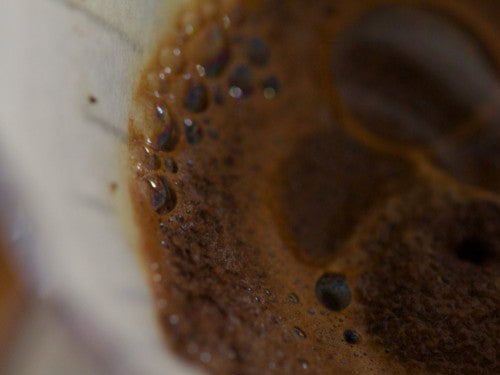Coffee, this aromatic magic potion, is the perfect way to start the day for many of us. But while we enjoy the tempting aromas, one question often remains in the back of our minds: How much caffeine is actually in a cup of coffee?
The answer depends on several factors, including the coffee beans, the roast, and the preparation method. In general, a classic cup of coffee, which is about 240 ml, contains about 95 mg of caffeine, but this value can vary. Arabica beans tend to have less caffeine than Robusta beans, and a darker roast can result in a slightly lower caffeine content.

Coffee compared to other caffeine sources
But what about total caffeine consumption? On average, an 8-ounce cup of coffee contains about 95 mg of caffeine, while a cup of black tea contains about 47 mg. Soft drinks and energy drinks can contain similar or even higher amounts, depending on the brand and serving size.
For many people, caffeine is an energy boost that helps them wake up in the morning or get through the day. But how much coffee is too much? The answer lies in individual tolerance to caffeine. Most health organizations, including the U.S. Dietary Guidelines, recommend a moderate caffeine intake of about 400 mg per day for adults, which is about four cups of coffee.
How much coffee is too much caffeine?
It's important to note that the effects of caffeine vary from person to person. Some people can drink a cup of coffee and feel alert and focused, while others may be more sensitive to caffeine and may experience difficulty sleeping, nervousness, or stomach problems.
The timing of caffeine consumption also plays a role. Caffeine has a half-life of about 5 hours, which means that after this time, half of the caffeine consumed has been broken down in the body. It is recommended that caffeine is best consumed in the morning or until early afternoon to avoid possible sleep disturbances.
Overall, the caffeine mystique is an individual journey. The golden rule is to listen to your own body and know your personal tolerance to caffeine. A cup of coffee can be not only a pleasure, but also a source of energy and focus when enjoyed in moderation. So treat yourself to your favorite cup of coffee and let the aromatic waves and subtle energy carry you into a new day.
Factors for the caffeine content of a coffee
-
Arabica vs. Robusta
Robusta beans tend to contain more caffeine than Arabica beans. The main reason is due to the genetic differences between the two species. Robusta plants naturally have higher caffeine content than Arabica plants, resulting in a higher amount of caffeine per gram.
-
Roasting level
The degree of roasting affects the density of the coffee beans. Typically, coffee loses weight during the roasting process. Since caffeine is a light substance, a darker roast will remove a smaller percentage of caffeine compared to a lighter roast. Therefore, darker roasts may have a slightly higher concentration of caffeine per gram.
-
Preparation method
Espresso is made through a rapid, high-pressure extraction, resulting in a higher concentration. With filter coffee, on the other hand, the contact time between water and coffee is longer, resulting in a lower caffeine concentration per milliliter.
-
Coffee quantity
The amount of coffee used for a cup directly affects caffeine extraction. More coffee means more caffeine per milliliter because the caffeine is extracted from the beans.
-
Brewing time
A longer brew time allows for a more complete extraction of flavors, including caffeine. Therefore, a longer brew time can result in a higher amount of caffeine per milliliter.
-
Coffee quality
High-quality coffee may contain slightly more caffeine per milliliter. This may be because high-quality beans have a higher density and concentration of ingredients, including caffeine.




